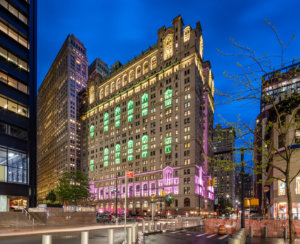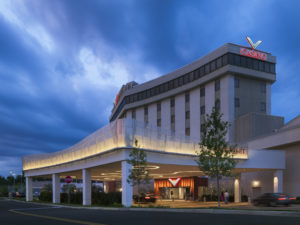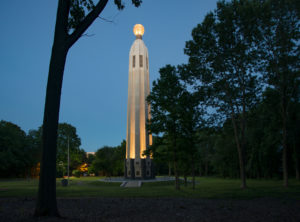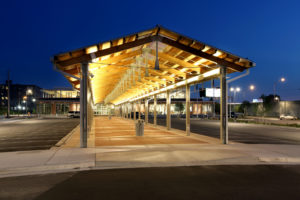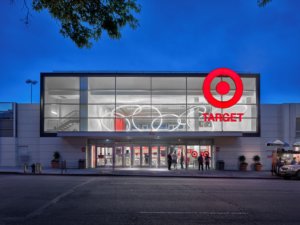Lighting designers are taking a more creative, mindful approach to exterior lighting in response to changes in the International Energy Conservation Code (IECC) and LEED over the last few years. Despite increased restrictions on exterior lighting, recent advances in technology and a strategic, collaborative design process can lead to more dramatic – and sustainable – façade lighting than ever before.
“These new requirements force us to be more selective in figuring out which elements best tell the story of the building,” shares Matthew J. Fracassini, LEED AP BD+C, Project Manager at The Lighting Practice. “It’s about having conversations with architects and clients to determine what’s most important about the façade.”
A More Contextual Approach
Building location and context play a more important role than ever in determining a façade lighting design due to changes in the IECC and LEED.
According to the IECC, building locations are now categorized into five different Model Lighting Ordinance (MLO) zones, ranging from Zone 0 (undeveloped natural areas with limited outdoor lighting) to Zone 4 (major metro centers with extensive development). In the most recent versions of the IECC, allowable power has been reduced across all zones, with stricter energy requirements for buildings in less developed areas. In addition, certain cities (such as New York City, as well as many coastal towns) have adopted codes that exceed the IECC requirements.
Meanwhile, the new LEED requirements focus on minimizing light pollution at ground level and reducing sky glow. These guidelines aim to reduce disruptions to a building’s surrounding environment while staying mindful of the safety and comfort of building visitors. LEED exempts exterior accent and feature lighting from these requirements as long as the lights are off by midnight.
New interior lighting requirements aim to reduce light pollution, as well. For example, glass-skinned buildings often rely on interior lighting to light the building’s exterior, but code requirements mandate that interior lights dim or turn off when a space is not occupied. This, in turn, leads to a more sustainable exterior lighting scheme that doesn’t disrupt the surrounding neighborhood with bright lights during off peak hours.
New Strategies for Impactful Exterior Lighting
Lighting designers are adapting to the new requirements with exterior lighting schemes that incorporate creative visual storytelling, new technology, and clever interplay between interior and exterior lighting.
When it comes to storytelling, the type of building plays an important role. Designers will assess the architectural details and programmatic elements to determine which features to highlight. “If it’s a retail building, for instance, a key goal is to attract shoppers,” says Fracassini. “So we’ll light elements high on the façade to draw attention from a distance. We may add lighting effects in signature colors to amplify a retailer’s branding, or we’ll focus on creating striking display windows.”
Advances in technology have made it easier to achieve energy goals while improving lighting design. New, smaller sized fixtures can nestle into architectural details, offering better control of spill light and a more seamless integration with the building’s façade. LED technology simplifies color changing exterior lighting while staying within allowable power guidelines.
“Ultimately, the new code requirements for exterior lighting are an important design factor, not a roadblock,” says Fracassini. “They help refine our focus in creating façade lighting designs that enhance the appearance and use of the building while limiting impacts on the surrounding community and climate.”
